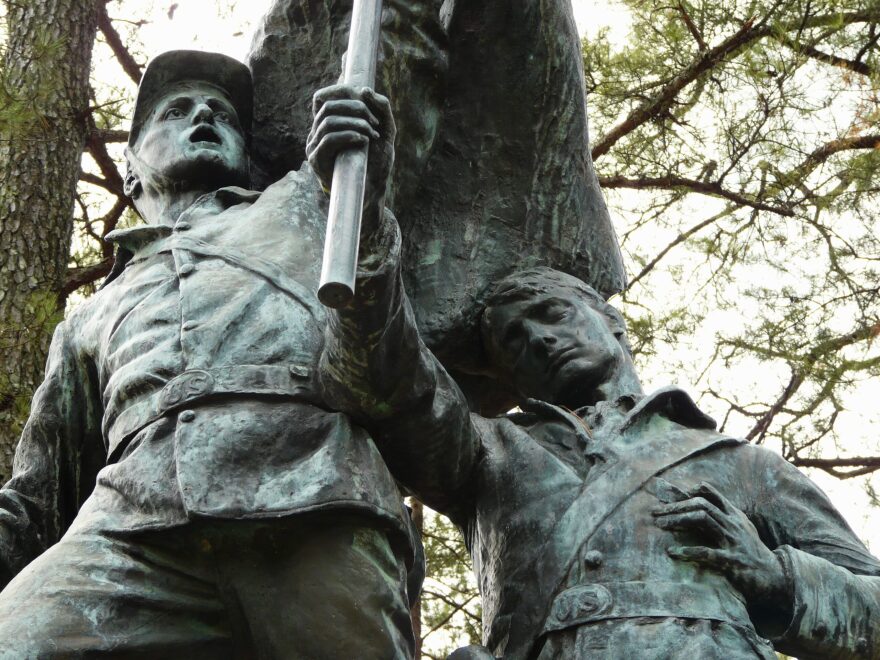The town is growing, developments sprouting here and there, as what was once a sleepy village becomes more and more suburban Chattanooga. Traffic flows eagerly down roads that not that long ago were lightly traveled. An historical marker sits on a road that's become a highway. If you want to read it, you need to park somewhere some distance away and walk, or else incur the wrath of commuters. I turned down my window and took the shot from the car.
My sister lives in a house on a hill very near to a place once known as the Cherokee Springs Confederate Hospital. I'm told that the hospital's footings are still there, on private land where the owner isn't sweet on history buffs tramping around. Just the thought of a real military hospital right here--just outside of Ringgold, Georgia--conjures images that go beyond the horror words can reach. After all, Chickamauga isn't all that far north (16 thousand Union, 18 thousand Confederate casualties--second bloodiest battle of the Civil War).
How many years, how many generations, does it require to erase hatred kindled by war's unimaginable pain?
Missionary Ridge isn’t that far off, so named for a history of Christian mission to the Cherokee, who lived here before being inhospitably pushed west on the Trail of Tears in the 1830s. Confederate losses at the Battle of Missionary Ridge were heavy too: 6,667 total. My sister's neighborhood has seen far more than its share of miseries.
As the Union Army reconnoitered in Chattanooga for what would become Sherman's March to the Sea, the Rebel army christened an immigrant Irishman named General Patrick Cleburne to hold fast--and he did. The numbers were stacked solidly against him, but he engineered a retreat that wasn't a retreat at all, allowing the Confederate army to steal away with its own necessities.
If we hearken to that quick-read highway sign, it seems clear that the Cherokee Ridge Hospital was largely gone by late September, 1863, before the battles that would have had the place bathed in blood (Chickamauga, 9/16/'63; Missionary Ridge, 11/25/'63; Ringgold Gap, 11/27/'63). I'm not the historian, but it may be that the hospital up on the ridge was more of a spa than a civil war battlefield hospital. No matter--there's the sign for all the world to read. . .quickly.
If I lived there, I'm sure I'd get over the feeling that the place is haunted. In any quick visit, amid the trees on those steep hills, uniformed men are still trying to stay out of the way of musket fire, some of them advancing, falling, others moving quickly past crumpled bodies.
But the casualties of war include much more than the bloody dead and wounded. Those casualties are written in scorched psyches--and horrors that require years--and generations--to fade.
In December of 1863, a woman from occupied Chattanooga wrote a letter to her mother, describing her feelings about the Federals all around.
"Yankee rule is nothing to boast of. It does not take but one person to make a trade. If you have an article they want, they'll tell you so and take it. Ma, I never hated a race of people before and I do believe it would gladden my soul to see the last Yankee killed, man woman and child."
How many years, how many generations, does it require to erase hatred kindled by war's unimaginable pain?
Sometimes I can't help thinking when people say "war is hell," as they do, hell is no metaphor.
Maybe it's a good thing you can't just pull over and read the Cherokee Ridge Hospital sign. Maybe it's time the thing comes down.







